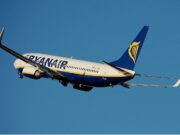General aviation pilots and aviation maintenance personnel need to take extra steps to eliminate the risks of carbon monoxide (CO) poisoning, according to the U.S. National Transportation Safety Board (NTSB), which issued two safety alerts Wednesday to increase awareness of the problem.
Safety Alerts SA-070 and SA-069 “warn mechanics and pilots that the risk of carbon monoxide poisoning is generally overlooked and underestimated — a dangerous prospect given that many internal combustion engine airplanes are heated by air warmed by exhaust systems using a heater shroud,” the NTSB said. “A defect or leak in the exhaust pipes or muffler can introduce the colorless, odorless and tasteless gas into the cockpit — with sometimes fatal results.”
The safety alerts warned that a high level of CO in the blood stream results in “oxygen starvation and the onset of symptoms such as headaches, drowsiness, nausea or shortness of breath.”
Pilots often fail to recognize the symptoms as signs of an elevated CO level, the alert to pilots said.
The alert to maintenance personnel cautioned that CO can enter an aircraft cabin through undetected cracks in exhaust and heater mufflers and tubes, unplugged holes in firewalls, degraded door and window seals, and leaks in air ducting.
In the safety alerts, the NTSB advised maintenance personnel to thoroughly inspect exhaust systems, air ducting, firewalls and window and door seals during 100-hour inspections and annual inspections, and to check heater air inlet cockpit vents for soot, which can indicate the presence of CO.
Pilots were advised to install CO detectors and replace them in accordance with manufacturer guidelines and to check the exhaust system during preflight inspections for cracking at the ends of the muffler.
“During flight, if you believe you have been exposed to CO, don’t hesitate to act,” the alert to pilots said. “Early symptoms are vague and may involve a headache or nausea. Other symptoms include impaired judgment, disorientation or dizziness.”
If signs of CO are found, the alert recommended opening the aircraft’s windows, turning off the heat, landing as soon as practical and seeking emergency medical attention.


